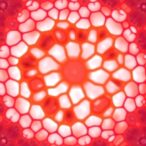
In a groundbreaking study poised to reshape our understanding of food safety and immune system interactions, researchers have unveiled compelling evidence that titanium dioxide—an ubiquitous food additive—can directly target immunocompetent cells within the human body. This revelation, detailed in a recent article published in Nature Communications, suggests that the microscopic particles of titanium dioxide, widely employed for its whitening and brightening properties in processed foods, might be more biologically active than previously recognized. The implications of this discovery resonate not only within the realms of nutrition and immunology but also provoke urgent reconsiderations of regulatory frameworks governing food additives.
Titanium dioxide (TiO₂) is a nanoscale compound extensively utilized in food products, pharmaceuticals, and cosmetics due to its low cost and effective opacity. For decades, it has been considered biologically inert, passing through the digestive system without engaging significantly with the body’s cellular machinery. However, the research led by Wills, Dabrowska, Robertson, and their colleagues challenges this assumption by demonstrating that TiO₂ particles can interact with immunocompetent cells—immune cells capable of recognizing and responding to pathogens and foreign substances—in a manner that could influence immune function.
The team employed cutting-edge analytical techniques including high-resolution microscopy and flow cytometry to track the uptake of TiO₂ particles by various immune cells extracted from both in vitro systems and in vivo models. Their data indicate that once ingested, titanium dioxide does not merely transit passively within the gut but is capable of translocating across the intestinal barrier and engaging in cellular internalization processes. This crossing of the epithelial barrier marks a critical step, positioning TiO₂ as a direct modulator of immune responses rather than a benign filler.
.adsslot_xuT0KPX9bp{width:728px !important;height:90px !important;}
@media(max-width:1199px){ .adsslot_xuT0KPX9bp{width:468px !important;height:60px !important;}
}
@media(max-width:767px){ .adsslot_xuT0KPX9bp{width:320px !important;height:50px !important;}
}
ADVERTISEMENT
This nuanced interaction with the immune system was characterized by a notable targeting of macrophages and dendritic cells—key players in immune surveillance and antigen presentation. The researchers observed that TiO₂ nanoparticles were engulfed by these cells through phagocytic mechanisms. Importantly, such uptake was accompanied by activation signals within the cells, leading to an altered secretion profile of cytokines, the signaling molecules that orchestrate inflammatory and immune responses. This finding raises the specter that titanium dioxide ingestion might provoke or exacerbate inflammatory states, particularly in susceptible populations or individuals with pre-existing immune dysregulation.
Beyond cellular engagement, the investigation delved into the potential systemic impacts. The authors documented that TiO₂ accumulation was not localized solely at the gastrointestinal level but could be detected within peripheral lymphoid tissues. This discovery is particularly noteworthy as it suggests a systemic distribution pathway whereby food additive particles might influence immune homeostasis at distal sites, potentially altering immune cell education and tolerance mechanisms. Such alterations could have far-reaching consequences, heightening the risk for autoimmune reactions or chronic inflammation.
The implications of titanium dioxide’s immunomodulatory capacity are vast given its pervasive presence within the global food supply. Processed snacks, confectioneries, chewing gums, and even certain dairy products frequently incorporate TiO₂ for aesthetic enhancement. The cumulative, daily intake of this additive, especially among children who often consume higher quantities of processed foods, may represent an unrecognized risk factor for immune-mediated disorders. The study thus compels a reevaluation of exposure limits and prompts a call for longitudinal epidemiological research to assess potential links between dietary TiO₂ and the rising prevalence of immune-related diseases.
On a technical level, the research sheds light on nanoparticle biointeractions, an area that has garnered escalating interest in nanotoxicology. Titanium dioxide, with its unique physicochemical properties including particle size, surface charge, and crystal phase, exhibits behaviors that defy simple inertness. The study showcases how these properties influence particle uptake and immune cell responses, highlighting the need for more refined characterization of food-grade nanoparticles. Moreover, it underscores the importance of considering nanoscale phenomena in dietary safety assessments rather than relying solely on bulk material evaluations.
This pioneering work also opens avenues for exploring potential mechanisms underpinning the immune cell targeting by titanium dioxide. The authors suggest that nanoparticle translocation and immune activation might involve disruption of tight junctions in the gut epithelium or may be facilitated by specialized M cells in Peyer’s patches, which are known to sample luminal contents. Additionally, the oxidative stress induced by TiO₂ nanoparticles within immune cells was implicated as a potential trigger for downstream signaling cascades, which could culminate in pro-inflammatory gene expression.
Further investigations demonstrated that immune cell interaction with TiO₂ was dose-dependent and influenced by particle aggregation states. Notably, the researchers emphasized that the physicochemical environment of the gastrointestinal tract—such as pH fluctuations and the presence of dietary components—modulates the bioavailability and immunological impact of titanium dioxide. These findings caution against oversimplified models of exposure and advocate for complex, physiologically relevant experimental designs in nanomaterial safety studies.
The study’s multifaceted approach, combining molecular, cellular, and systemic analyses, represents a methodological leap in food additive research. By leveraging advanced imaging and immunophenotyping, the team dissected intricate pathways of nanoparticle-host interactions, unraveling subtle yet potentially critical biological effects that conventional toxicological assays could overlook. This paradigm exemplifies how interdisciplinary collaboration can illuminate hidden dimensions of widely accepted food ingredients.
In the broader context of public health, these insights arrive amid escalating scrutiny of nanoparticles in consumer products. Regulatory agencies worldwide are grappling with the challenge of balancing technological innovation with safety assurance. The unexpected immunocompetent cell targeting by titanium dioxide highlighted in this study argues for precautionary principles in the usage of nanomaterials in food, calling for tighter controls and enhanced transparency in labeling practices to inform consumer choice.
Equally compelling is the prospect of utilizing this newfound understanding for therapeutic innovation. If titanium dioxide can selectively target immune cells, there may be opportunities to engineer nanoparticle-based delivery systems for immunomodulatory drugs or vaccines. However, the dualistic nature of TiO₂’s interactions warns of the delicate balance between utility and toxicity that must govern future nanomedical applications.
The article further contemplates the evolutionary context of the immune system’s interaction with ingested particulates, proposing that titanium dioxide may represent an unanticipated environmental stimulus influencing immune regulation. This perspective emphasizes the dynamic interplay between human-made nano-entities and biological systems, framing nanotoxicology as an emerging frontier in immunopharmacology and food sciences.
Wills, Dabrowska, Robertson, and colleagues have thus not only identified a novel biological property of a commonplace food additive but have also set the stage for multidisciplinary discourse on the implications for human health, regulatory policy, and future technological development. Their meticulous investigation invites ongoing research to delineate the long-term consequences of nanoparticle ingestion and to develop strategies to mitigate potential risks.
As the scientific community digests these findings, one prevailing message emerges: substances regarded as chemically inert may possess hitherto unrecognized bioactivities that challenge established safety paradigms. The study acts as a clarion call for vigilance, innovation, and responsible stewardship in the ever-evolving landscape of food additives and nanotechnology-driven consumer products.
In summary, the demonstrated ability of titanium dioxide particles to engage and modulate immunocompetent cells transmutes our understanding of this common additive from a passive ingredient into an active biological participant. This revelation demands a reevaluation of dietary exposure, regulatory oversight, and the direction of future research. The intersection of nanomaterials with immunology promises both risks and rewards, compelling comprehensive inquiry to safeguard public health while harnessing the potential of nanotechnology.
Subject of Research: Immunocompetent cell targeting by food additive titanium dioxide nanoparticles
Article Title: Immunocompetent cell targeting by food-additive titanium dioxide
Article References:
Wills, J.W., Dabrowska, A., Robertson, J. et al. Immunocompetent cell targeting by food-additive titanium dioxide.
Nat Commun 16, 6067 (2025). https://doi.org/10.1038/s41467-025-60248-9
Image Credits: AI Generated
Tags: biological activity of titanium dioxidecutting-edge analytical techniques in researchfood safety and immune systemimmune response to food additivesimmunocompetent cells interactionimpact of food additives on healthnanoparticles in food productsnutritional immunology implicationsregulatory frameworks for food additivestitanium dioxide food additivetitanium dioxide in processed foodstitanium dioxide safety concerns



